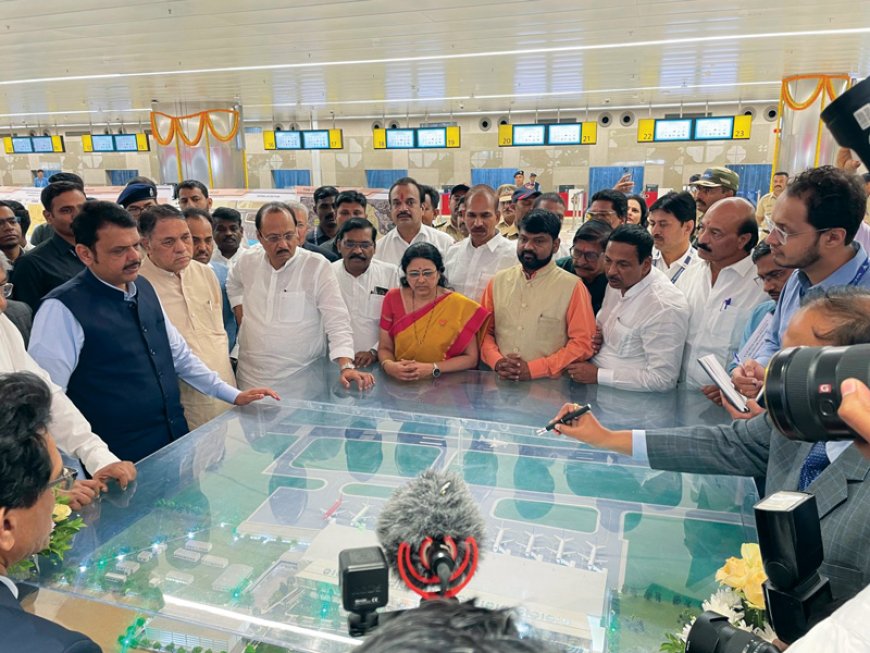Sustainability should be at the core, with a focus on green airports powered by renewable energy.

Sandeep Gulati
MD, Egis South Asia
How do you assess the current status of India’s airports sector?
As India’s civil aviation becomes one of the fastest-growing aviation markets globally, it is poised to be a major growth engine, contributing to India's aim to become a USD 7 trillion economy by 2027. To achieve this, India's airport sector is undergoing significant transformation and growth, marked by several key trends and developments.
Infrastructure expansion and modernization: India's airports are experiencing a period of rapid expansion and modernization, driven by both government initiatives and private sector investments. Major airports like those in Delhi, Mumbai, Bangalore, and Hyderabad have been upgraded to world-class standards, with expansions in terminal capacities, while new greenfield airports are under development in Navi Mumbai, Noida, and Mopa (Goa) to cater to the rising passenger traffic. The number of airports in India is expected to increase from 137 today to 220 by 2025. These new airports will bring closer together India’s almost 50 cities with populations exceeding one million people, creating substantial economic value in the long term. The expansion of regional connectivity through the Ude Desh ka Aam Naagrik (UDAN) scheme is a critical development, aimed at revitalizing smaller, underserved airports.
Egis has played a pivotal role in supporting these modernization efforts by contributing to key airport projects in Pune, Trichy, and Lucknow. For instance, in Trichy, Egis provided design and consultancy services for the new integrated passenger terminal. This state-of-the-art facility now accommodates 4.5 million passengers annually, demonstrating Egis's commitment to enhancing India’s airport infrastructure.
Passenger traffic growth: India's aviation sector has seen strong growth in passenger traffic, driven by post-pandemic recovery and domestic demand. The Airports Authority of India (AAI) projects that the sector could handle over 500 million passengers by 2040. This growth is underpinned by economic expansion, rising middle-class incomes, affordable airfares, and improved connectivity.
Privatization of airports: Indian government has expedited the privatization of airports to enhance efficiency and attract investments. The Adani Group’s acquisition of airports in Ahmedabad, Lucknow, Mangaluru, Guwahati, and Jaipur exemplifies this trend. Such privatization efforts are expected to continue with more airports fostering competition and improving service quality.
Air cargo growth: India’s air cargo sector is growing due to the e-commerce boom and increased global trade. The government’s NABH Nirmaan initiative aims to triple cargo handling capacities by the end of 2024 ensuring the infrastructure keeps pace with demand. Egis has been involved in modernizing cargo facilities, including those at Pune and Lucknow airports, by implementing automated systems and enhancing logistics efficiency.
Green and sustainable airports: There is a growing emphasis on eco-friendly practices, with airports adopting solar energy, water conservation measures, and green building certifications. For example, Tiruchirappalli International Airport (Trichy), covering an extensive 75,000 sqm, features a new integrated passenger terminal building that has earned a prestigious 4-star Green Rating for Integrated Habitat Assessment (GRIHA) due to its sustainable design features, such as energy efficiency and water conservation measures.
Key challenges: Despite this remarkable progress, capacity constraints remain a significant challenge, especially at major airports like Delhi and Mumbai, which are operating near capacity and experiencing congestion. The rapid development of new airports and expansion of existing ones is essential to meet growing demand.

What are the innovations happening in India’s airport infrastructure developments?
India's airport infrastructure is rapidly advancing, driven by both technological innovations and sustainability efforts. Smart airports are integrating digital technologies, such as biometric boarding, AI-driven automation, and contactless services, to enhance the passenger experience. Initiatives like DigiYatra are facilitating paperless travel through facial recognition technology.
On the sustainability front, airports are increasingly adopting solar power, energy-efficient designs, and rainwater harvesting systems. Egis has been at the forefront of these innovations, contributing to projects like the Pune airport, where the firm provided design and construction management services, incorporating green building practices, including energy-efficient systems and rainwater harvesting. Additionally, solar panels and waste management systems ensured a reduced carbon footprint with minimal environmental impact, resulting in new facilities that meet world-class eco-friendly standards.
What is lacking in infrastructure and overall operations of Indian airports? What are the measures needed to overcome these shortcomings?
While there has been significant progress, several challenges remain in India’s aviation sector, including congestion at major hubs, insufficient regional connectivity, and outdated ground infrastructure. To overcome these issues, India needs to expand existing airport capacities through multi-airport systems, accelerate the development of regional airports, and improve air traffic control systems. To achieve this, it is also critical to streamline regulatory approvals, which will boost operational efficiency and delivery times on pivotal upgrades. Lastly, many airports lack integrated public transport access; therefore, improving hinterland multimodal transport connectivity is essential to meet future demands.

What is your vision on India’s airport infrastructure development?
Our vision for India’s airport infrastructure development is to support the creation of a world-class, sustainable, and interconnected airport ecosystem that meets the growing demands of this dynamic economy. This includes accelerating the development of tier-2 and tier-3 airports through our many design and consultancy service offerings, and addressing inefficient air traffic management with the integration of smart technologies for automation like AI and biometrics for seamless, tech-driven passenger experiences. Moreover, sustainability should be at the core, with a focus on green airports powered by renewable energy and the provision of solutions that address critical climate change targets. Egis has successfully contributed to three major airport projects in India recently—Pune, Trichy, and Lucknow—significantly advancing aviation infrastructure. This accomplishment highlights our dedication to excellence and innovation in the sector.







